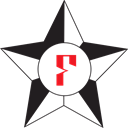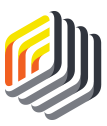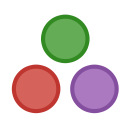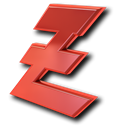
Agda is a dependently typed functional programming language. It has inductive families, i.e., data types which depend on values, such as the type of vectors of a given length. It also has parametrised modules, mixfix operators, Unicode characters, and an interactive Emacs interface which can assist the programmer in writing the program.
Agda is a proof assistant. It is an interactive system for writing and checking proofs. Agda is based on intuitionistic type theory, a foundational system for constructive mathematics developed by the Swedish logician Per Martin-Löf. It has many similarities with other proof assistants based on dependent types, such as Coq, Epigram, Matita and NuPRL.
 F* (pronounced F star) is an ML-like functional programming language aimed at program verification. Its type system includes polymorphism, dependent types, monadic effects, refinement types, and a weakest precondition calculus. Together, these features allow expressing precise and compact specifications for programs, including functional correctness properties. The F* type-checker aims to......
F* (pronounced F star) is an ML-like functional programming language aimed at program verification. Its type system includes polymorphism, dependent types, monadic effects, refinement types, and a weakest precondition calculus. Together, these features allow expressing precise and compact specifications for programs, including functional correctness properties. The F* type-checker aims to......
 Isabelle is a proof assistant for writing and checking mathematical proofs by computer. It allows mathematical formulas to be expressed in a formal language and provides tools for proving those formulas in a logical calculus.......
Isabelle is a proof assistant for writing and checking mathematical proofs by computer. It allows mathematical formulas to be expressed in a formal language and provides tools for proving those formulas in a logical calculus.......
 Coq is a proof assistant, which allows you to write mathematical proofs in a rigorous and formal way, and have them checked for correctness by the computer. It also allows programming with proofs of correctness for the code, and dependent types.......
Coq is a proof assistant, which allows you to write mathematical proofs in a rigorous and formal way, and have them checked for correctness by the computer. It also allows programming with proofs of correctness for the code, and dependent types.......
 Mathcad is engineering calculation software that drives innovation and offers significant process productivity advantages for product development and engineering design projects.......
Mathcad is engineering calculation software that drives innovation and offers significant process productivity advantages for product development and engineering design projects.......
 RapidMiner (Community edition) is a data mining software.It was formerly known as "YALE". You can use RapidMiner as a stand-alone application for data analysis, or integrate it as a data-mining engine into your own products. Features:* Data integration, analytical ETL, data analysis and reporting into a single suite* Powerful yet......
RapidMiner (Community edition) is a data mining software.It was formerly known as "YALE". You can use RapidMiner as a stand-alone application for data analysis, or integrate it as a data-mining engine into your own products. Features:* Data integration, analytical ETL, data analysis and reporting into a single suite* Powerful yet......
 With Euler Math Toolbox, you experience mathematical computations, numerical as well as symbolic, with ease and beauty.The program will display results with nice graphics, which can be exported to files or to web pages, or can be pasted into presentations.Not only can you do quick and reliable numerical computations using......
With Euler Math Toolbox, you experience mathematical computations, numerical as well as symbolic, with ease and beauty.The program will display results with nice graphics, which can be exported to files or to web pages, or can be pasted into presentations.Not only can you do quick and reliable numerical computations using......
 MATLAB is a numerical computing environment and programming language. Maintained by The MathWorks, MATLAB allows easy matrix manipulation, plotting of functions and data, implementation of algorithms, creation of user interfaces, and interfacing with programs in other languages. Although it is numeric only, an optional toolbox uses the MuPAD symbolic engine,......
MATLAB is a numerical computing environment and programming language. Maintained by The MathWorks, MATLAB allows easy matrix manipulation, plotting of functions and data, implementation of algorithms, creation of user interfaces, and interfacing with programs in other languages. Although it is numeric only, an optional toolbox uses the MuPAD symbolic engine,......
 OCaml is an industrial strength programming language supporting functional, imperative and object-oriented styles.......
OCaml is an industrial strength programming language supporting functional, imperative and object-oriented styles.......
 Julia is a high-level, high-performance dynamic programming language for technical computing, with syntax that is familiar to users of other technical computing environments. It provides a sophisticated compiler, distributed parallel execution, numerical accuracy, and an extensive mathematical function library. The library, largely written in Julia itself, also integrates mature, best-of-breed......
Julia is a high-level, high-performance dynamic programming language for technical computing, with syntax that is familiar to users of other technical computing environments. It provides a sophisticated compiler, distributed parallel execution, numerical accuracy, and an extensive mathematical function library. The library, largely written in Julia itself, also integrates mature, best-of-breed......
 Doronix Math Toolbox is a numerical computing environment with programming language which can be used as alternative to MATLAB. It allows matrix manipulations, plotting of functions and data, implementation of algorithms, creation of user functions, import and export CSV-files and more......
Doronix Math Toolbox is a numerical computing environment with programming language which can be used as alternative to MATLAB. It allows matrix manipulations, plotting of functions and data, implementation of algorithms, creation of user functions, import and export CSV-files and more......
 R is a free software environment for statistical computing and graphics.It is a GNU project which is similar to the S language and environment which was developed at Bell Laboratories (formerly AT&T, now Lucent Technologies) by John Chambers and colleagues. R can be considered as a different implementation of S.......
R is a free software environment for statistical computing and graphics.It is a GNU project which is similar to the S language and environment which was developed at Bell Laboratories (formerly AT&T, now Lucent Technologies) by John Chambers and colleagues. R can be considered as a different implementation of S.......
 Haskell is an advanced purely-functional programming language. An open-source product of more than twenty years of cutting-edge research, it allows rapid development of robust, concise, correct software. With strong support for integration with other languages, built-in concurrency and parallelism, debuggers, profilers and rich libraries.......
Haskell is an advanced purely-functional programming language. An open-source product of more than twenty years of cutting-edge research, it allows rapid development of robust, concise, correct software. With strong support for integration with other languages, built-in concurrency and parallelism, debuggers, profilers and rich libraries.......
 Rebol (historically REBOL) is a cross-platform data exchange language and a multi-paradigm dynamic programming language designed by Carl Sassenrath for network communications and distributed computing. It introduces the concept of dialecting: small, optimized, domain-specific languages for code and data.Douglas Crockford of JavaScript fame has described REBOL as "a more modern......
Rebol (historically REBOL) is a cross-platform data exchange language and a multi-paradigm dynamic programming language designed by Carl Sassenrath for network communications and distributed computing. It introduces the concept of dialecting: small, optimized, domain-specific languages for code and data.Douglas Crockford of JavaScript fame has described REBOL as "a more modern......
 PureBasic is a native 32 bit and 64 bit programming language based on established BASIC rules. The key features of PureBasic are portability (Windows, Linux, MacOS X and AmigaOS are currently supported), the production of very fast and highly optimized executables and, of course, the very simple BASIC syntax. PureBasic......
PureBasic is a native 32 bit and 64 bit programming language based on established BASIC rules. The key features of PureBasic are portability (Windows, Linux, MacOS X and AmigaOS are currently supported), the production of very fast and highly optimized executables and, of course, the very simple BASIC syntax. PureBasic......
 Go, also called golang, is a programming language initially developed at Google in 2007 by Robert Griesemer, Rob Pike, and Ken Thompson. It is a statically-typed language with syntax loosely derived from that of C, adding automatic memory management, type safety, some dynamic-typing capabilities, additional built-in types such as variable-length......
Go, also called golang, is a programming language initially developed at Google in 2007 by Robert Griesemer, Rob Pike, and Ken Thompson. It is a statically-typed language with syntax loosely derived from that of C, adding automatic memory management, type safety, some dynamic-typing capabilities, additional built-in types such as variable-length......
| About | Terms |
| About UsContact Us | TpSort ScorePrivacy PoliceDMCA Policy |
© 2015-2016 www.tpsort.com, Inc